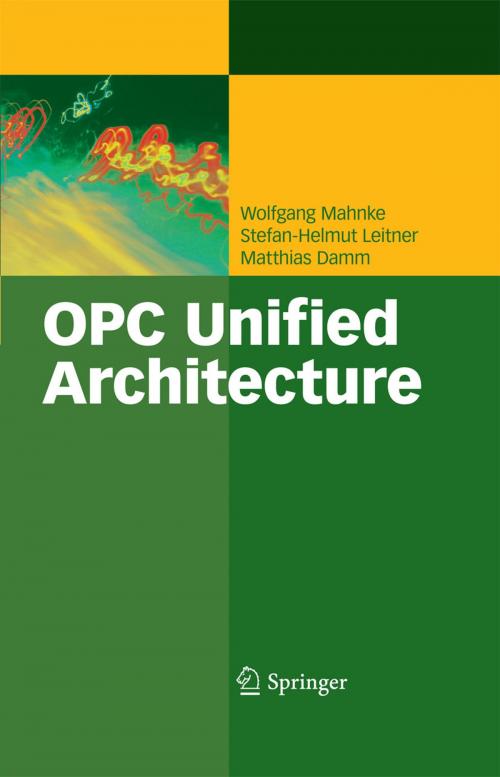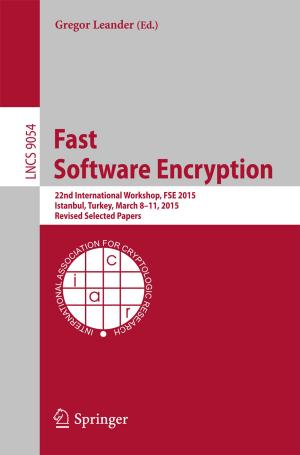OPC Unified Architecture
Nonfiction, Computers, Application Software, Multimedia, Programming, Software Development, General Computing| Author: | Wolfgang Mahnke, Stefan-Helmut Leitner, Matthias Damm | ISBN: | 9783540688990 |
| Publisher: | Springer Berlin Heidelberg | Publication: | April 5, 2009 |
| Imprint: | Springer | Language: | English |
| Author: | Wolfgang Mahnke, Stefan-Helmut Leitner, Matthias Damm |
| ISBN: | 9783540688990 |
| Publisher: | Springer Berlin Heidelberg |
| Publication: | April 5, 2009 |
| Imprint: | Springer |
| Language: | English |
Motivation for This Book The OPC Foundation provides specifications for data exchange in industrial au- mation. There is a long history of COM/DCOM-based specifications, most pro- nent OPC Data Access (DA), OPC Alarms and Events (A&E), and OPC Historical Data Access (HDA), which are widely accepted in the industry and implemented by almost every system targeting industrial automation. Now the OPC Foundation has released a new generation of OPC specifications called OPC Unified Architecture (OPC UA). With OPC UA, the OPC Foundation fulfills a technology shift from the retiring COM/DCOM technology to a servi- oriented architecture providing data in a platform-independent manner via Web Services or its own optimized TCP-based protocol. OPC UA unifies the previous specifications into one single address space capable of dealing with current data, alarms and events and the history of current data as well as the event history. A remarkable enhancement of OPC UA is the Address Space Model by which v- dors can expose a rich and extensible information model using object-oriented techniques. OPC UA scales well from intelligent devices, controllers, DCS, and SCADA systems up to MES and ERP systems. It also scales well in its ability to provide information; on the lower end, a model similar to Classic OPC can be used, providing only base information, while at the upper end, highly sophisticated models can be described, providing a large amount of metadata including complex type hierarchies.
Motivation for This Book The OPC Foundation provides specifications for data exchange in industrial au- mation. There is a long history of COM/DCOM-based specifications, most pro- nent OPC Data Access (DA), OPC Alarms and Events (A&E), and OPC Historical Data Access (HDA), which are widely accepted in the industry and implemented by almost every system targeting industrial automation. Now the OPC Foundation has released a new generation of OPC specifications called OPC Unified Architecture (OPC UA). With OPC UA, the OPC Foundation fulfills a technology shift from the retiring COM/DCOM technology to a servi- oriented architecture providing data in a platform-independent manner via Web Services or its own optimized TCP-based protocol. OPC UA unifies the previous specifications into one single address space capable of dealing with current data, alarms and events and the history of current data as well as the event history. A remarkable enhancement of OPC UA is the Address Space Model by which v- dors can expose a rich and extensible information model using object-oriented techniques. OPC UA scales well from intelligent devices, controllers, DCS, and SCADA systems up to MES and ERP systems. It also scales well in its ability to provide information; on the lower end, a model similar to Classic OPC can be used, providing only base information, while at the upper end, highly sophisticated models can be described, providing a large amount of metadata including complex type hierarchies.















